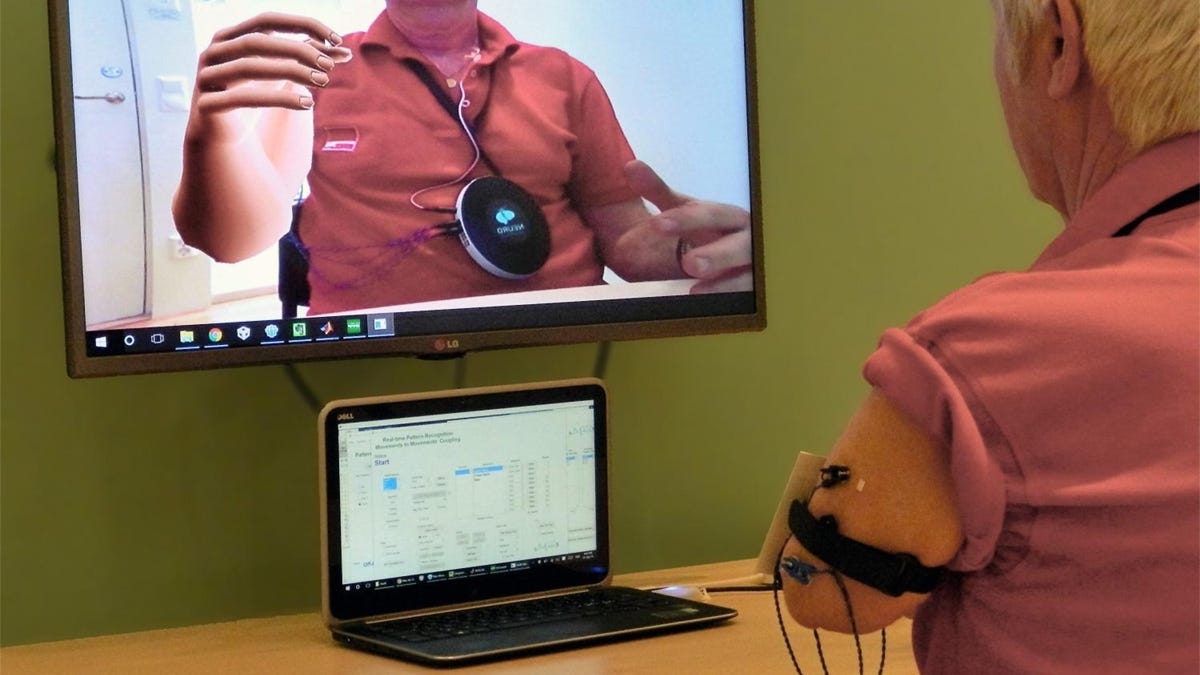The animated body parts helping cure phantom limb pain
How do you deal with pain in a limb that isn't actually there? By recreating it in augmented reality.
Phantom limb pain is a curious thing. One would think that if you lose a limb, you no longer have any sensation in that limb. But nearly all amputees report feeling sensation in their lost limb, and as many as 80 percent report feeling actual pain.
This pain can become chronic, and very hard to treat. Treatments such as electrical nerve stimulation, anaesthetics, acupuncture, medication and even invasive surgery can help, but some patients report feeling no relief at all.
This is where Max Ortiz Catalan of Chalmers University of Technology comes in with a different approach -- augmented reality. His research has been published in The Lancet.
His system would not be possible without the technological advances of the last few years. It uses myoelectric sensors, similar to the Myo armband gesture control system, that detect the electrical signals travelling through the muscle on the end of the patient's amputated limb.
These are translated into movements, which are displayed on a screen that shows a mirror of the patient, with one big difference. The virtual version of the patient has both limbs. The patients can then think about moving their limb and watch those movements occur on the screen in front of them.
This was tested on 14 patients, each over 12 sessions in six weeks.
"We selected the most difficult cases from several clinics," Ortiz Catalan said in a statement. "We wanted to focus on patients with chronic phantom limb pain who had not responded to any treatments. Four of the patients were constantly medicated, and the others were not receiving any treatment at all because nothing they tried had helped them. They had been experiencing phantom limb pain for an average of 10 years."
The results were more than encouraging. By the last session, the patients reported that the quality of pain had dropped by around 50 percent, and that the pain's intrusiveness on their daily lives had likewise halved. Two of the four medicated patients were even able to drop the dosage of their medication, one by 33 percent and the other by 81 percent.
"We now intend to go further with a larger controlled clinical trial," Catalan said.
"The control group will be treated with one of the current treatment methods for phantom limb pain. This time we will also include leg amputees. More than 30 patients from several different countries will participate, and we will offer more treatment sessions to see if we can make the pain go away completely."


